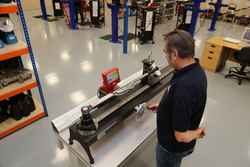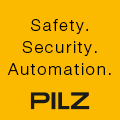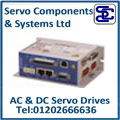
Posted to News on 3rd Oct 2017, 16:09
It's time to torque ISO 6789-2:2017
Having been named as the first laboratory in the world to be accredited to perform calibrations on hand torque tools to the newly revised BS EN ISO 6789-2:2017 standard, here, Neill Brodey, Managing Director at Norbar Torque Tools, takes the opportunity to outline the key changes, and what they mean for manufacturers and tool users alike.

The BS EN ISO 6789:2003 divided requirements into three sections: design conformance testing; quality conformance testing and recalibration. The intention was to allow different groups of users to identify the relevant clauses for their needs. Coming into play earlier this year, the 2017 edition takes this logic even further and divides the standard into two distinct parts. As a result, the type of documentation supplied with tools has changed.
With new requirements for design and quality control, Part 1 relates to the manufacturer and conformance, whereas Part 2 focuses more closely on the calibration of torque tools. In essence, the key changes have been made to protect the word "calibration', which is often used too casually. Calibration is defined by ISO as: "a set of operations that establish, under specified conditions, the relationship between values of quantities indicated by a measuring instrument or measuring system" and the corresponding values realised by the standards."
While most of the requirements from the 2003 edition are carried into Part 1, there are new design requirements at work of which manufacturers need to be aware. These include the introduction of new maximum torque values for hexagonal output drives, which is of particular interest for torque screwdriver manufacturers. In addition, changes have been made to certain quality conformance requirements. For example, the time to attain the last 20 per cent of the torque application during testing has now been more tightly defined according to the size of the torque tool. Manufacturers will also now need to state that the tools adhere to the new requirements of Part 1 by supplying a "Declaration of Conformanc" with the tool, as opposed to a "Calibration Certificat".
Part 2 of the standard now covers the traceable calibration of the tool, and the requirements of the calibration equipment. This includes highlighting the steps that need to be taken to distinguish uncertainty factors that may cause the calibration values to vary from calibration to calibration for that particular torque tool. Therefore, should a manufacturer also wish to produce a certificate of calibration, they must issue it in accordance with Part 2 of the new ISO 6789 standard. For a new torque tool model that has not yet been seen by the laboratory, calibration to this standard takes around 60 minutes.
Declaration of Conformance
The good news is that what this all means for the tool user is quite simple. Those who were previously content with buying a new torque tool and putting it into service on the basis of the "Calibration Certificat" supplied by the manufacturer can still do so. However, in its place, there will be a "Declaration of Conformanc". The declaration does come with a date of issue, but retesting should take place within 12 months, or 5000 use cycles of the tool being put into use, rather than the date of the Declaration of Conformance.
However, for those working in environments with stricter quality control processes that require a traceable "Calibration Certificat" issued by an accredited laboratory, it will be necessary to request that the tool be tested to Part 2 of the standard as well. This will provide the tool user with both a "Declaration of Conformanc" and a "Calibration Certificat".
While the change may take a little getting used to, the update to ISO 6789 will help to provide more clarity in the long run, with two distinct parts and separate documentation to match. The 2017 edition is now published and should be used in place of the old 2003 edition, which has been withdrawn. However, in Europe the Euro Norm or EN version has a 12-month period of overlap (February 2017 - February 2018) where either edition can be used.
For more information, please visit www.norbar.co.uk, or get in touch with any questions by sending an email to [email protected].















